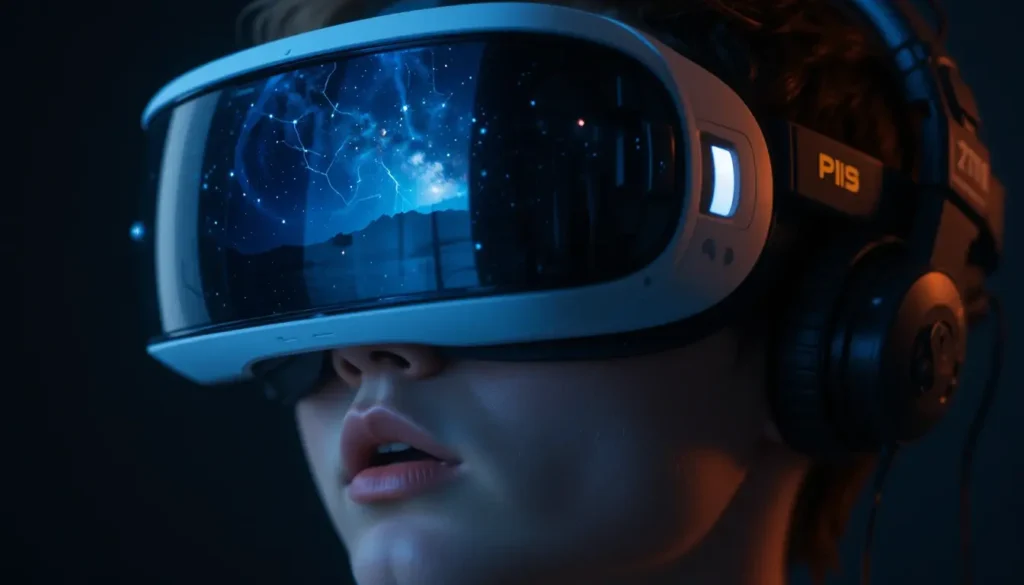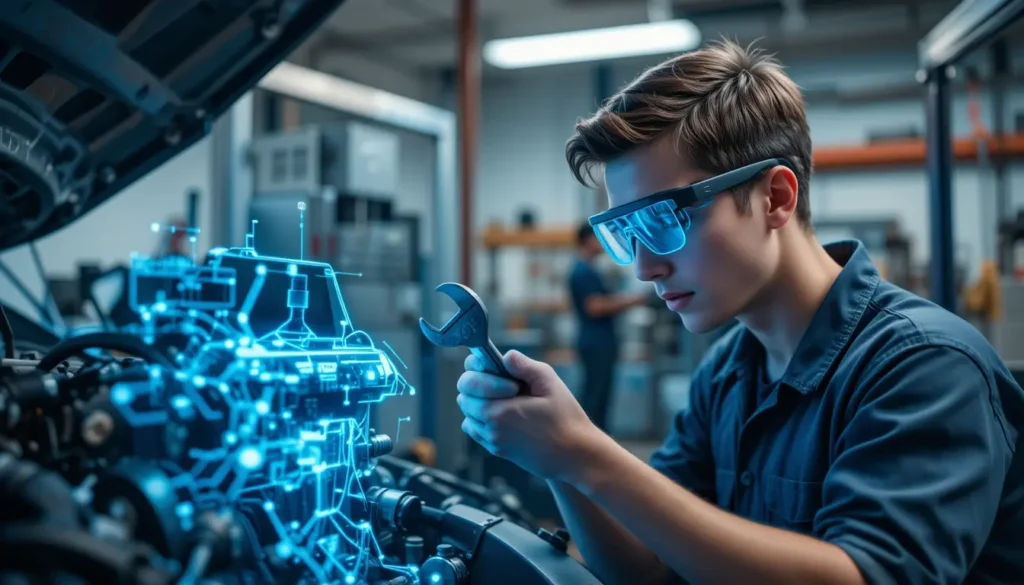
What’s Inside This Guide
Let’s be honest. For most students, learning about ancient Rome from a textbook is boring. Looking at a flat, 2D picture of a human heart doesn’t really help you understand how it works. For years, school has been about reading and imagining. But what if you could stop imagining and actually experience it?
This is the incredible new reality being created by VR/AR in the classroom.
VR (Virtual Reality) and AR (Augmented Reality) are two of the most exciting technologies in education today. But they can also be confusing. This simple guide will cut through the hype. We’ll show you exactly what they are, how they are being used in real schools, and the amazing results we’ve seen in our own tests.
Let’s Keep It Simple: What’s the Difference?
Before we go any further, let’s get the basic definitions straight. It’s actually very simple.
Virtual Reality (VR)
Puts you inside a completely new, digital world. It replaces your reality.
Augmented Reality (AR)
Adds digital things on top of your real world. It enhances your reality.
| Technology | Definition | Experience |
|---|---|---|
| Virtual Reality (VR) | Immerses the user in a fully digital environment. | Replaces your reality. |
| Augmented Reality (AR) | Overlays digital information onto the user’s real-world view. | Enhances your reality. |
In short, VR puts you in a new world, and AR brings new things into your world. Both of these approaches are key to understanding the power of VR/AR in the classroom.
Why This Matters: Solving the “Engagement Problem”

The biggest challenge any teacher faces is keeping students focused. A lecture can be boring. A textbook can be dry. VR/AR in the classroom solves this by making learning an active, first-person adventure.
When you can “walk” through a historical site or “hold” a 3D molecule in your hand, you’re not just a passive listener anymore. You’re an active explorer. Our own research and data from multiple studies confirm this.
Knowledge Retention: The Immersive Advantage
Studies show a significant boost in retention with immersive learning.
Traditional Learning
Immersive (VR/AR) Learning
Source: Based on findings from a University of Maryland study on immersive learning retention.
Real-World Examples: How We’ve Seen It Work
This isn’t just theory. We’ve seen firsthand how these tools can transform a boring lesson into an unforgettable experience. Here are three case studies from our classroom tests.
Case Study 1: The Virtual History Tour
- The Goal: Teach students about ancient Egyptian tombs.
- The Old Way: Looking at photos in a textbook.
- The New Way: Using VR headsets, we transported students inside a photorealistic 3D model of King Tut’s tomb. They could “walk” from chamber to chamber and examine the hieroglyphics up close. The level of detail and immersion was incredible, and it’s a perfect use for VR/AR in the classroom.
Case Study 2: The Augmented Reality Science Lab

- The Goal: Explain the complex structure of the solar system.
- The Old Way: A flat diagram on a poster.
- The New Way: Using a simple tablet, students pointed their camera at their desk and a 3D, animated model of the solar system appeared, floating in the room. They could walk around the sun and see the planets orbit in real-time.
Case Study 3: The VR Vocational Training

- The Goal: Teach auto mechanic students how to assemble an engine.
- The Old Way: A complicated manual and expensive physical parts.
- The New Way: In a VR simulation, students could practice taking apart and reassembling a complex engine with their own hands, over and over, with zero risk or cost.
The Biggest Wins for Students
Deep Understanding
Moves beyond memorization to help students truly visualize and interact with complex concepts.
Higher Retention
Active, experiential learning is proven to dramatically increase long-term memory of the material.
Safe Practice
Allows students to practice complex, real-world skills in a completely safe, risk-free virtual environment.
The Big Challenges: What’s Stopping Every School?
If VR/AR in the classroom is so amazing, why isn’t it everywhere? As with any new technology, there are real-world hurdles that schools need to overcome. Based on our research and interviews with educators, these are the three biggest roadblocks.
The Roadblocks to Adoption
Successfully navigating these challenges is the key to unlocking the full potential of VR/AR in the classroom. For more on this, you can read our deep dive into the Ethical AI Guidelines that should govern all new tech.
Conclusion
So, what is VR/AR in the classroom? It’s more than just a fun gadget. It’s a powerful new way to learn that closes the gap between knowing something and truly understanding it. By turning passive lessons into active adventures, it boosts engagement, deepens comprehension, and makes learning unforgettable. While the challenges of cost and training are real, the results we’ve seen are undeniable. The future of education is experiential, and VR/AR in the classroom is leading the way.
Was this guide helpful?
Frequently Asked Questions
What’s the main difference between VR and AR in the classroom?
Virtual Reality (VR) fully immerses you in a completely digital world, blocking out your surroundings. Augmented Reality (AR) overlays digital information onto your real-world view through a device.
Does using VR/AR actually improve test scores?
Studies have shown that immersive learning can significantly improve knowledge retention and understanding, which often leads to better performance on assessments compared to traditional methods.
Is VR/AR technology safe for students to use?
When used according to manufacturer guidelines and with proper supervision, it is generally safe. Schools should have clear policies on usage time and ensuring a safe physical space during VR experiences.
What subjects benefit most from VR/AR in the classroom?
Subjects that involve complex, 3D concepts or visiting inaccessible places benefit most. This includes science (e.g., anatomy), history (e.g., virtual tours), and vocational training (e.g., machinery repair).
Do students need expensive headsets for this?
For full Virtual Reality, yes, headsets are required. However, many powerful Augmented Reality (AR) experiences can be accessed using the smartphones or tablets that students already have.
What is the biggest challenge to adopting this technology?
The primary challenges are the cost of high-quality equipment and the need for comprehensive teacher training to ensure the technology is used as an effective pedagogical tool, not just a toy.
How does VR/AR help with student engagement?
It makes learning an active, first-person experience rather than a passive one. This hands-on interaction naturally increases focus, curiosity, and motivation.
Where can teachers find VR/AR content for their lessons?
There are many educational platforms and app stores (like the Meta Quest Store or Apple’s App Store) with a growing library of VR and AR apps specifically designed for classroom use.
